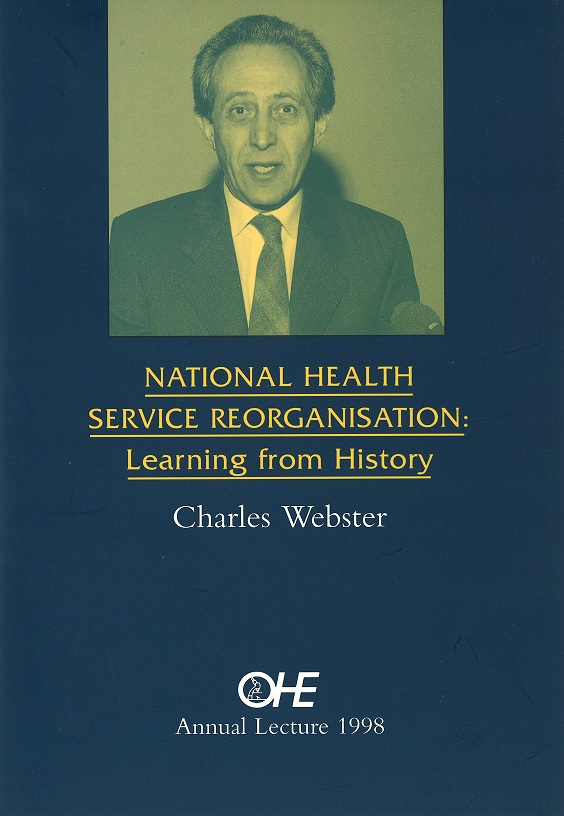Sign up to our newsletter Subscribe
Challenges and Solutions for Budget Impact Analysis of Gene Therapies

I am greatly flattered to be invited to deliver the 1998 annual lecture of the Office of Health Economics, partly on account of my distinguished predecessors, but also because this invitation provides an opportunity for a more explicitly historical perspective than is usual…
I am greatly flattered to be invited to deliver the 1998 annual lecture of the Office of Health Economics, partly on account of my distinguished predecessors, but also because this invitation provides an opportunity for a more explicitly historical perspective than is usual on these occasions. This year of the fiftieth anniversary of the National Health Service(NHS) is an especially appropriate opportunity for such an exercise.
Building on the important insights provided by Sir Douglas Black who, in the 1994 OHE Annual Lecture, 1 alluded to the fallibility of the · reorganisation process, in this lecture I would like to turn the historical spotlight on the phenomenon of NHS reorganisation. As Professor Reinhardt reminded us in the 1997 OHE Annual Lecture, growing insecurity about the condition of our health services represents a global problem. He rightly points out that our anxieties stem from the anomalous economic characteristics of our transactions relating to health care, which resolutely refuse to be ordered according to the formulae applied with success to other parts of the economy. According to this account, even the most successful western economies have lapsed into a seemingly permanent malaise about their health care systems. Professor Reinhardt sees confirmation for this malaise in the ‘periodic calls for bold reforms that are followed periodically by feeble attempts at reform, only to be followed by further calls for reform’. At any one time, some task force or other is likely to be at work finding its way out of this labyrinth, but on the basis of the record of contemporary history, he understandably expects that these efforts are likely to end in frustration.
For most of the life of the health service, reorganisation has been high on the political agenda. There could be no better reminder of the salience of this issue than the production of the three national White Papers, on NHS reorganisation in England, Scotland, and Wales, by the Labour government, only a few months after its return to office. My main purpose in this lecture is to suggest, however, that the NHS has not always been assisted by the haphazard nature of political intervention over health service reorganisation. I will argue that we are unlikely to extricate ourselves from the dilemmas outlined so compellingly by Professor Reinhardt unless we take steps to elevate decision-making to a higher plane of rationality. On account of its state-funded and unified nature, the NHS is particularly exposed to the vagaries of gratuitous political interference. On the other hand, these same factors offer great prospect of rapid improvement of the entire system if politicians’ judgement is exercised using the best available evidence. On the basis of this case study involving the cluster of important policy issues associated with reorganisation, I will offer some tentative suggestions about a possible means to improve the quality of political decision-making about the NHS.
The basic chronology of change in the UK health care system is self- evidently a story of sharp contrasts, and it presents a major paradox. As comprehensively chronicled in the recent book by Geoffrey Rivett, biomedical research and its technical application represents a cumulative, accelerating and in many respects inspiring record of achievement, which has inevitably fuelled progressively higher levels of aspiration. On the other hand, the translation of these innovations into a viable and effective system of health care has constituted a faltering and accident-prone process. Failure of the health care system to respond to changing demands and expanding aspirations has inevitably produced a high level of anxiety concerning the adequacy of our health service. In this respect the UK is participating in a problem that is shared by the entire western world. For better or worse, the centralised character of our health service and the politicised character of the decision-making process have thrown our problems into sharper relief than in the predominantly decentralised and insurance-based systems prevalent among our neighbours. Since major structural overhauls have featured as one of the predominant responses to particularly acute moments of crisis, I would suggest that evidence concerning reorganisation exercises provides one of the most sensitive indicators of the state of the health care system.
A brief glance at the chronology of reorganisation of health care in Britain confirms the sense of gathering insecurity about the system. Even superficial inspection indicates that the interval between major reorganisations has been progressively diminishing. The administrative system bequeathed by Lloyd George after 1911 persisted for 37 years. Bevan’s new health service lasted for 26 years. Even with the correctives introduced in 1982, the Joseph reorganisation, of 1974 survived for only 17 years, while the internal market changes of 1991 are about to be radically altered after only about 7 years. Indeed, the 1990s will have witnessed almost incessant structural change. Historians of the future will recognise this decade as the period of greatest structural instability for health care in Britain in the course of the present century. The optimist will regard this as indicative of a healthy spirit of innovation and progressive problem solving; others will adopt a more pessimistic interpretation, and detect dangers of infinite regress.
National Health Service Reorganisation: Learning from History?
